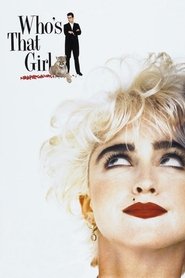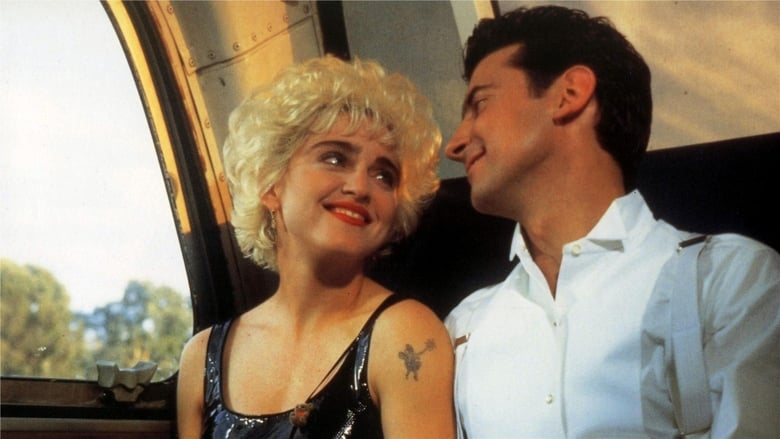“Who’s That Girl” (1987) is a zany, screwball comedy that whirls like a tornado through the lives of its characters. Madonna, in all her rebellious glory, bursts onto the screen as Nikki Finn, an enigmatic force of nature shaking up the world around her. With a mischievous twinkle in her eye and a wardrobe that screams ’80s chic, she turns heads and raises eyebrows wherever she goes. As the story unfolds, Nikki takes us on a wild ride filled with slapstick humor, mistaken identities, and outrageous escapades. With each high-energy scene, the film keeps us guessing and laughing until the very end.

CLICK HERE⭭⭭⭭🎦_Watch Who’s That Girl 1987 English Subtitles_
Review
Who’s That Girl: A Cinematic Parable on Identity and Redemption
In the realm of motion pictures, a new entrant emerges, shrouded in mystery and fervor. “Who’s That Girl” flutters from the shadows, beckoning curiosity and bewitching audiences with its enigmatic allure. As George Orwell passionately unveiled hidden truths, this cinematic enigma dissects the intricate layers of human existence and challenges societal norms.
Set in the dystopian metropolis of New York City during the 1980s, “Who’s That Girl” sheds light on the exhilarating yet treacherous journey of Nikki Finn (played by Madonna), an audacious young woman entangled in a web of injustice and false accusations. The film traverses her quest for exoneration while unraveling a tapestry of love, betrayal, and self-discovery.
News surrounding “Who’s That Girl” began swirling long before its theatrical release. The highly anticipated collaboration between director James Foley and cultural icon Madonna immediately piqued interest among fans and critics alike. However, detractors lamented casting choices and expressed skepticism over Madonna’s abilities to embody such a complex character.
The plot within “Who’s That Girl” unfolds as Nikki Finn escapes from a correctional facility after being wrongly convicted for a crime she did not commit. With relentless determination, she seeks redemption while eluding uptight lawyer Loudon Trott (played by Griffin Dunne). Their adventures through eccentric neighborhoods and humorous encounters generate an aura of delight amid societal unrest.
The film ingeniously weaves fact with fiction as it delves into various social issues plaguing society at that time. Drawing parallels to Orwellian themes, such as government surveillance and control masquerading as justice, “Who’s That Girl” becomes an intriguing microcosm of society rife with prejudices.
The cast performances mirror Orwell’s exploration of identity in his literary works. Madonna mesmerizes audiences with her charisma and flair, delivering a nuanced portrayal of Nikki Finn. Her magnetic presence amplifies the film’s underlying message of empowerment and self-discovery. Opposite her, Dunne’s portrayal of the neurotic lawyer accentuates their contrasting personalities, constructing a dynamic bond that sparks both amusement and personal growth.
Cinematographer Jan de Bont masterfully captures the gritty yet vibrant atmosphere of 1980s New York City. Every frame projects an ethereal blend of reality and fantasy, making each scene a visual feast for the eyes. This symbiotic relationship between narrative and visuals solidifies the film’s artistic legacy.
While “Who’s That Girl” did not amass numerous awards, it remains etched in cinematic history as an emblematic representation of its era. Madonna’s remarkable performance earned her a nomination for Best Actress at the Golden Raspberry Awards, a testament to her commitment to character development.
Gossipy whispers surrounded the filming process of “Who’s That Girl,” adding fuel to its enigmatic allure. Reports suggested clashes between Madonna and director James Foley due to creative differences, enhancing the sense of unpredictability that underpins every aspect of this captivating work.
The soundtrack becomes an integral component within “Who’s That Girl,” with Madonna contributing four original tracks to the film. The infectious beats perfectly complemented the narrative, while songs like “Who’s That Girl” soared on music charts worldwide, cementing this cinematic creation as a pop culture phenomenon.
An analysis of “Who’s That Girl” reveals intricate layers beneath its surface charm. Beyond Madonna’s magnetic charisma lie themes exploring identity crises, redemption, and societal hypocrisy – territory in which Orwell himself so adeptly trod through his seminal works.
The film dazzles with special effects that further blur lines between reality and fiction. From gravity-defying stunts to dazzling wardrobe choices, every frame crackles with visual spectacle while weaving seamlessly into the narrative tapestry.
Development challenges plagued the creation of “Who’s That Girl,” with script revisions and funding issues frequently occurring. Despite this, the final product bursts forth with cinematic brilliance that raises interesting questions about the delicate dance between artistic vision, studio demands, and societal expectations.
Dialogue within “Who’s That Girl” varies from witty banter to poignant introspection, amplifying the internal struggles faced by its characters. Each line serves a purpose, unfolding their complex personalities and highlighting a critique on society’s judgmental gaze.
Within this swirling cauldron of artistic endeavors, various crews collaborated to bring “Who’s That Girl” to life. From cinematographers to costume designers, their dedication shines through, as every detail meticulously contributes to a fully immersive experience for audiences.
However, criticism did follow in the wake of “Who’s That Girl,” with some reviewers dismissing it as mere frivolity or lacking depth. Yet such perspectives fail to grasp the layered social commentary deeply embedded within this seemingly light-hearted tale.
The production process saw intense scrutiny during post-production editing. The final cut aimed to strike a harmonious balance between Madonna’s magnetic on-screen presence and a storyline that resonates with an ever-seeking audience. This editing feat solidifies the film as an enduring testament to cinematic visionaries’ creative prowess.
Ultimately, “Who’s That Girl” emerges as a beacon of artistic integrity in an era awash with commercial excesses. With influences drawn from George Orwell’s works, this enigmatic masterpiece weaves societal criticisms amidst captivating performances and extraordinary visual splendor – daring viewers to question their own role within oppressive systems and redefine stereotypes imposed upon them.
As “Who’s That Girl” dances across your screen like a seductive waltz through time, be prepared for an enlightening journey where identity is challenged, redemption sought, and societal norms shattered. Whether you find yourself captivated by its allure or yearning for deeper meaning – one thing remains certain – “Who’s That Girl” shall etch its enigmatic legacy into the annals of cinematic history.
Technical Data

- Release : 1987-08-07
- Runtime : 92
- Genre : Comedy, Romance
- Cast : Madonna as Nikki Finn, Griffin Dunne as Loudon Trott, Bibi Besch as Ms. Worthington, John McMartin as Simon Worthington, John Mills as Montgomery Bell
- Crew : Pembroke J. Herring as Editor, Jan de Bont as Director of Photography, Bernard Williams as Producer, Donald B. Woodruff as Art Direction, Peter Guber as Executive Producer
- Revenue : $7,305,209
- Budget : $18,500,000
- Company : The Guber-Peters Company, Warner Bros. Pictures
- Popularity : 8.938
- Summary : An uptight New York tax lawyer gets his life turned upside down, all in a single day, when he’s asked to escort a feisty and free-spirited female ex-convict whom asks him to help prove her innocence of her crime.
- Tagline : A funny thing happened on the way to the bus station.
